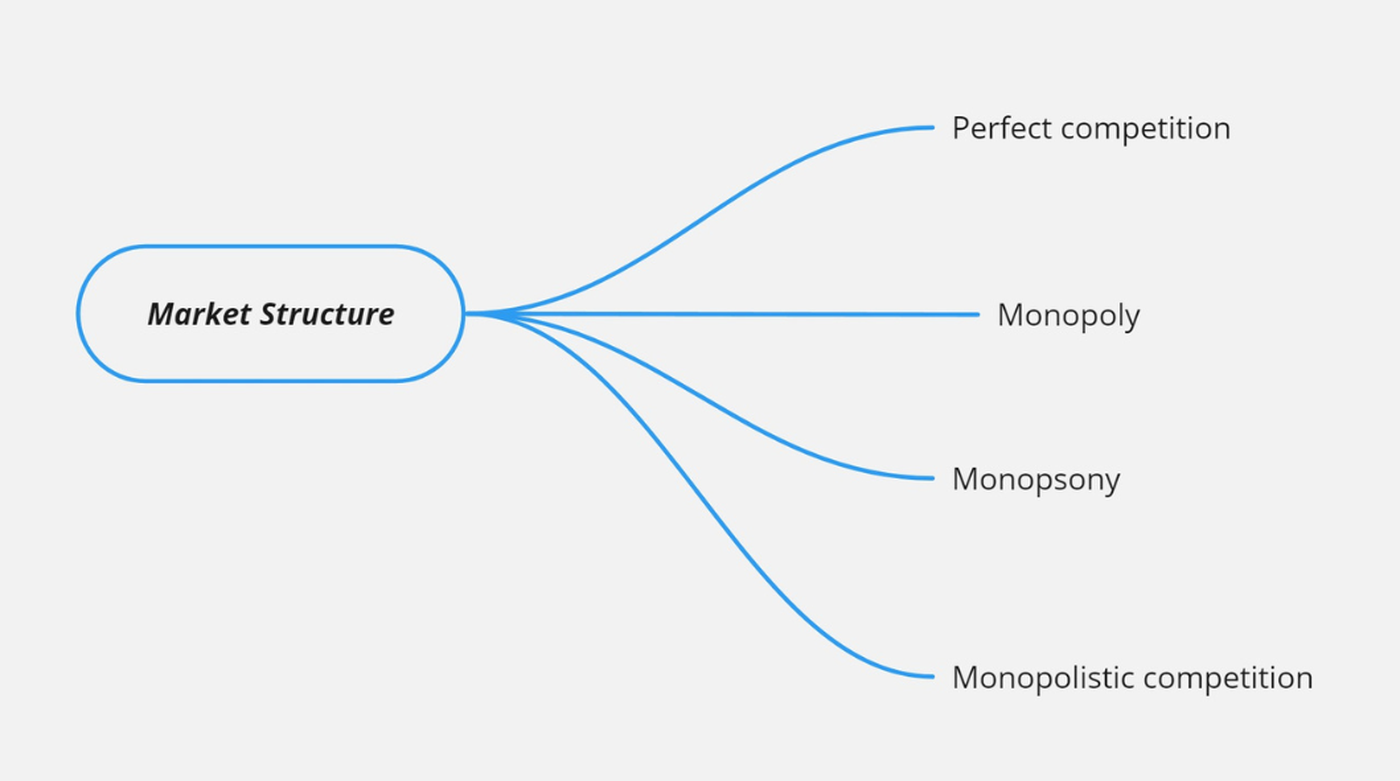Ever wondered how markets are organized and why they matter?
Let us introduce you to the world of market structures, where the way goods and services are bought and sold can vary as much as your morning coffee options.

Perfect Competition: Picture this: a bustling farmer's market where every stall sells identical apples. In perfect competition, many sellers offer the same product, with no one having enough market structure to influence prices. Think of agricultural products or standardized goods like wheat or rice.
Monopoly: Ever heard of a company being the only game in town? That's monopoly power. Imagine you're in a small town, and there's only one internet provider. They set the rules because they're the only option. Companies like Google in search engines or De Beers in diamonds once held (or still hold) monopolistic positions.
Monopolistic Competition: Think of a street lined with cafes. Each offers coffee, but with its unique twist—maybe one has artisanal brews, another cosy ambience. In this market structure, there are many sellers, but each offers slightly different products. Fashion, restaurants, and even hair salons fall into this category.
Monopsony: Ever heard of the buyer's monopoly? In this market structure, there's only one significant buyer for a product or service. Imagine you're a small farmer, and there's only one big supermarket chain that buys your produce. You're at their mercy when it comes to setting prices.
ADVERTISEMENT

Understanding these market structures is like having a map for navigating the business world. Each comes with its own set of challenges and opportunities. Perfect competition offers little room for profit but keeps prices low for consumers. Knowing the market structure helps businesses make informed decisions. Whether you're a small startup trying to carve a niche or a corporate titan defending your turf, understanding the lay of the land is key. It also helps policymakers identify where competition may be lacking or where regulations are needed to level the playing field.
Market structures shape the way we buy, sell, and compete. Like pieces on a chessboard, each structure plays a vital role in the economic game. So, next time you're sipping your coffee or scrolling through your smartphone, take a moment to ponder the market forces at play. Who knows? You might just see the world in a whole new light.















